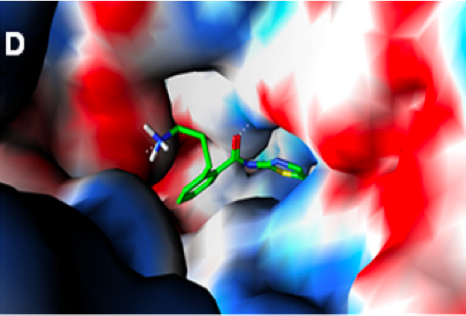Bacteria can accumulate in the oral cavity through the presence of biofilms. These biofilms consist of both aerobic and anaerobic bacteria. An accumulation of anaerobic bacteria, such as Porphyromonas gingivalis, cause the gum to become irritated and can lead to harmful oral diseases like periodontitis. These biofilms consist of both aerobic and anaerobic bacteria; each have a slightly different metabolic pathway. A drug named amixicile targets the metabolic process in anaerobic bacteria, particularly pyruvate oxidation. Specifically, amixicile targets pyruvate ferredoxin oxidoreductase (PFOR).
It is of interest to examine how amixicile binds to and interacts with PFOR and how pyruvate is blocked from being converted further. Kennedy et al. (2016) utilized a method to virtually examine the interaction of amixicile and PFOR and virtually manipulate and improve amixicile’s structure for more efficient binding.
